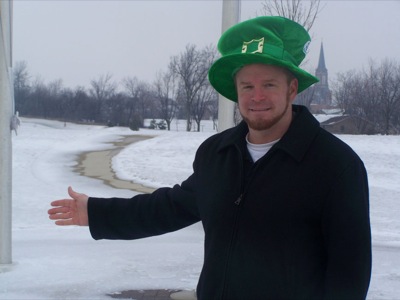Saturday, March 8th, 2008
It's that time of year again
By Janie Southard
Tick tock. Spring ahead. Fall behind. Yada yada.Daylight saving time begins Sunday at 2 a.m.
It's getting to be old hat now, but back in 1918 when "summer time" came to America, folks were flummoxed that their routine was going to be disturbed.
Thumbing through old Daily Standards from March and April 1918 produced a report that President Woodrow Wilson recently had signed the daylight saving bill to take effect on April 1 of that year.
The newspaper pronounced many days before the event in no uncertain terms that clock day "will be observed without the slightest disorganization or impairment. Trains will run on time and any element of daily life centered around time will remain the same." So there!
The article went on to observe that "all Americans will arise, transact daily business and retire all an hour earlier than has been the custom, but with the clock an hour fast no one will know the difference." Whoa, say that again!!
Confusing perhaps but the April 1, 1918, Standard happily reported that all Celina turned its clocks ahead with "scarce a dissenting voice in compliance with Uncle Sam's new daylight conservation order."
The crux of the problem that first clock day was that many folks took Uncle Sam's order verbatim, namely that they had to get out of bed at 2 a.m. to fiddle around with the darned clock. No doubt they also had to turn on the lights.
But the April 1 issue reported that "most of the populace turned their time forward 'ere they sought their couches Saturday night," meaning before they went to bed.
Some folks still thought the clock plan was confusing but, as the newspaper states, "the directions were as plain as the nose on your face" on how to set timepieces forward.
Further it states that even though people lost an hour of sleep at the close of a "strenuous week," no one seemed to mind and "cheerfully arose with the clock and rejoiced in a good long day." Oh right?!
There have been a lot of quirks surrounding daylight saving time over the years. For one thing it hasn't always been one hour ahead or behind. Curiously it's sometimes been 20 to 40 minutes up or down, or just a half adjustment (30 minutes) or a double adjustment (two hours).
During World War II, it was called War Time and lasted nonstop from Feb. 3, 1942, to Sept. 30, 1945.
Benjamin Franklin came up with the idea in 1784. In 1916 during World War I some European countries adopted it as a way to conserve energy by using less artificial light. As stated above, President Wilson signed DST into law in 1918 and it was repealed in 1919. At that point, to change time or not became a local matter.
Interestingly, that old Standard noted most of the local churches complied with the new time law, but not all of them. Hhhmmm.
Today DST is pretty much in use everywhere and that includes all local churches.


